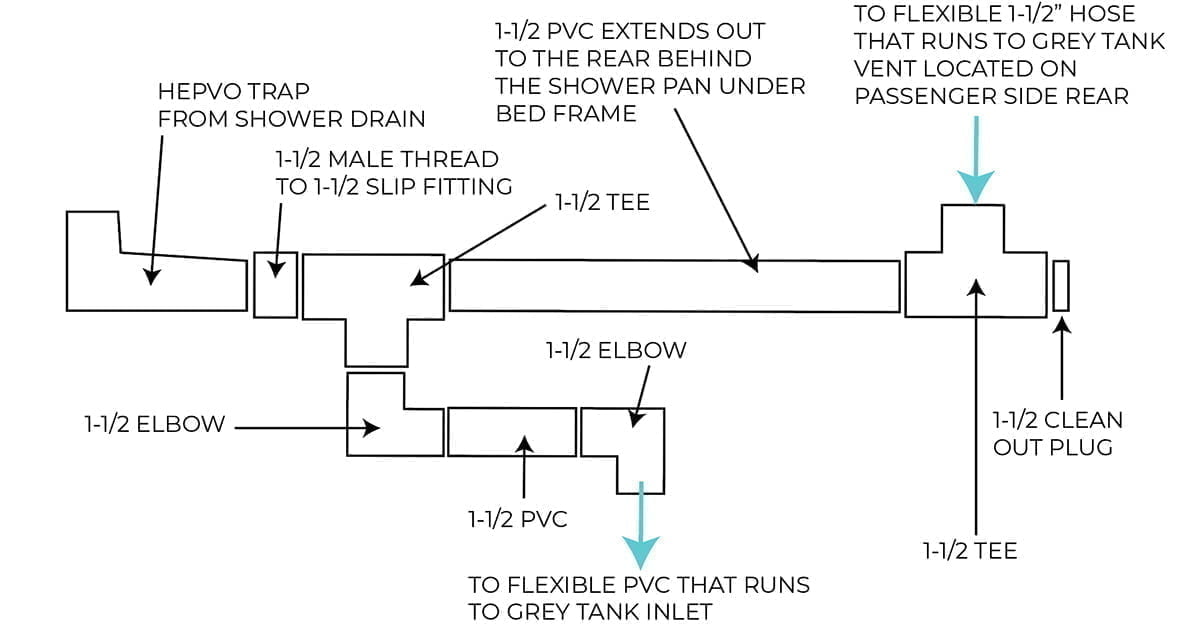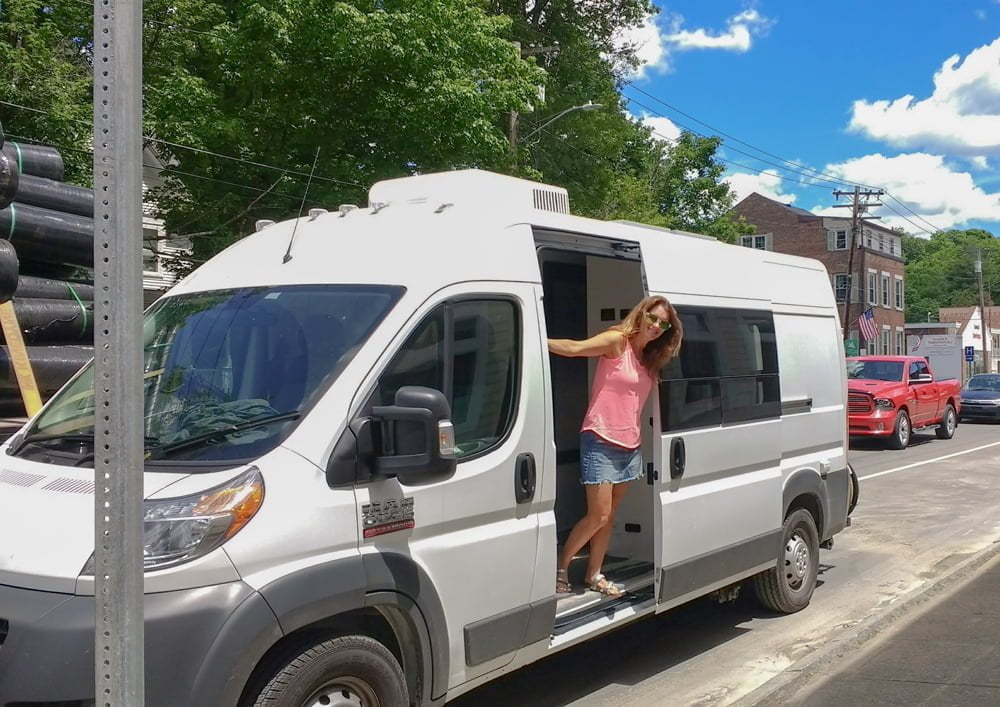Miles Van Camper has an extensive plumbing system with both hot and cold water supplying a galley/kitchen sink, a wet bath/shower and an outdoor shower fixture that is accessed off the back doors.
Note: there is a photo gallery of the plumbing system at the bottom of this post!
Checkout all the parts I used on the build (outside of basic hardware store items).
Overview
Miles Van Camper has a 33 gallon fresh water tank that is mounted on the floor adjacent to the driver side wheel well. There is another 5.3 gallons of fresh water that is essentially “stored” in the water heater tank for a total of around 38 gallons on board. Below the van, on the passenger side between the front and rear axles, is a 35 gallon grey water storage tank. The design of this tank is very long but “short” so it fits in this space without being too “low”. On Promaster vans, the rear axle effectively determines the ground clearance and my goal was to not have anything underneath the van hanging below this point. So, this grey tank and the propane tank on the driver side ended up being at approximately the same level as the rear axle.
On the driver side of the van there is a locking panel that has both a pressurized city-water connection and a gravity-fed fresh water tube that is used to fill up the tank. When city water is connected (a hose from a campsite, etc.) the water lines inside the van are pressurized from that city water connection. Otherwise (most of the time), the water lines are pressurized with a pump which pulls water from the fresh tank (at the bottom) and pumps in into/builds pressure with accumulator tank that is installed just downstream from the pump. The accumulator tank ensures that the pressure is “even” to the various places it’s used (galley faucet, shower, etc.).
There is a fresh water gravity drain valve underneath of driver side of the van near the rear bumper that can be used to drain the fresh water tank when it’s not in use.
All the water lines are inside the van except for the few feet of drain lines underneath the van to assist in all-weather camping.
The van also features a full “wet bath” with a shower and cassette toilet that I detailed in this other post. There is also “outdoor” shower that is accessed from the back doors that can be used outside.
Hot Water!
I used Isotemp Spa 20L water heater which can heat the water using the van engine coolant or an electric element if you’re not driving. Once heated, the water in the tank stays warm for a day or longer depending on ambient temperatures. The water heater is installed underneath the refrigerator which is very close to the galley faucet so you can get hot water there quickly without running the tap for long. I love this water heater solution for vans and I wrote an blog post about it and how to install it including hooking it up to the van’s coolant lines.
Drains & Grey Tank
The galley sink uses a small, RV-style trap under the sink. Water exits the trap and runs through a flexible 3/4″ hose to the grey water tank underneath the van.
The shower drains into a special, 1-1/2″ Hepvo trap. This device provides the functionality of a standard “p-trap”, but takes up less space under the shower pan because it can be installed “horizontally”. It also prevents grey water from back flowing “up” into the shower. The trap is connected to the grey water tank using a combination of 1-1/2″ PVC and flexible PVC.
In order for your drains to work properly and for the grey tank to empty quickly, you need to have a vent line that lets air in or escape if the tank is being filled or emptied. In my latest build, the vent line actually tees off the shower drain underneath the shower pan. This provides venting for both that drain and the grey tank itself. This vent line uses standard (rigid) 1-1/2″ PVC to extend past the shower area to the rear of the van and then goes “up” vertically toward the ceiling a few feet. At this point, where the height is sufficient to prevent any water from being in the vent line, I transition to flexible 1-1/2″ hose which continues over to the passenger rear side panel and vents through a hole in the van that is protected by a plastic vent cover.
The grey tank has a 3″ outlet with gate valve that connects to a standard RV sewer hose for draining at a dump station or campground. I store my sewer hose in this handy storage tube which is attached to my hitch-mounted cargo/bike carrier.
Here’s an illustration of the shower drain and vent line plumbing:
Installing The Grey Water Tank
The 35 gallon grey water tank is installed underneath the van on the passenger side. It spans from just behind the muffler in the front back to the jacking point just in front of the rear tire in the back. The tank has “rails” on each of the long sides molded into the plastic. I used heavy duty angle iron bolted up through the van floor to hold the tank with these rails. The 4x bolts that attach to each corner of angle iron/tank rails go through the van floor and they are installed before the floor insulation and plywood sub floor. I use extra large washers on the bolt heads to help distribute the weight of the tank/grey water against the sheet metal of the van floor. There are also three “u-channel” supports that go “across” the tank, perpendicular to the primary supports. These are bolted into the angle iron and support the bottom of the tank as it fills up with grey water. All of the metal and drain lines are painted black.
Getting this tank into place and “fabricating” all the supports is a difficult process. Using a jack and a piece of plywood helps to lift the tank into place but it’s oddly shaped and not very rigid so it’s pretty tricky.
I installed a large 12 volt DC heating pad on the outlet side of the grey tank. These are thermostatically controlled and designed to turn on at 45 degrees (Fahrenheit) and off at 68 degrees so that the water in the tank does not freeze. I also used two of these smaller pads, designed for drain lines on the sink drain line which is exposed, underneath the van as it travels across to the grey tank. All of the these heat pads are on a switch so that I can leave the system off unless I’m in a cold climate.
Below are some photos of the grey water tank including the drain lines and heating pads.
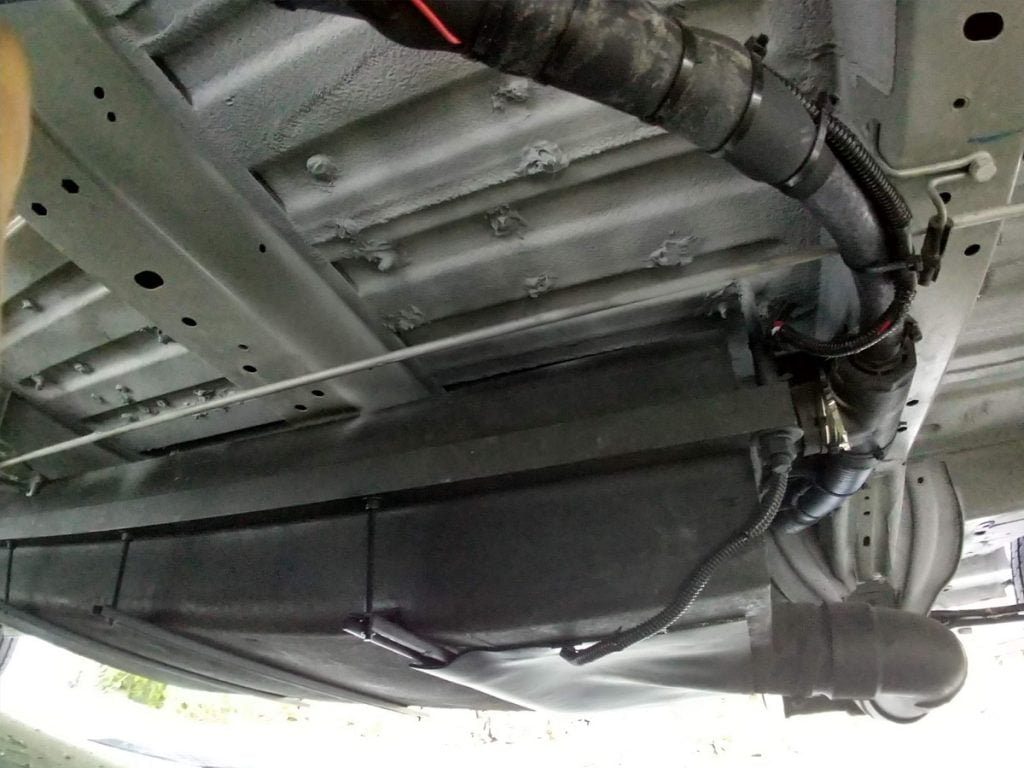
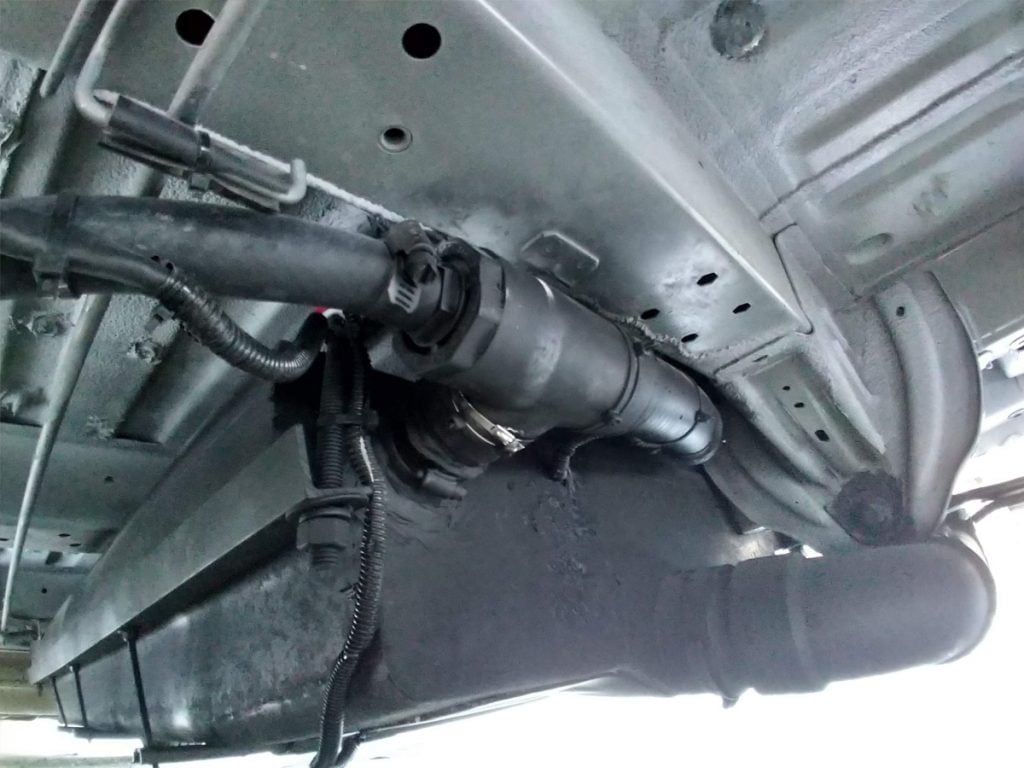
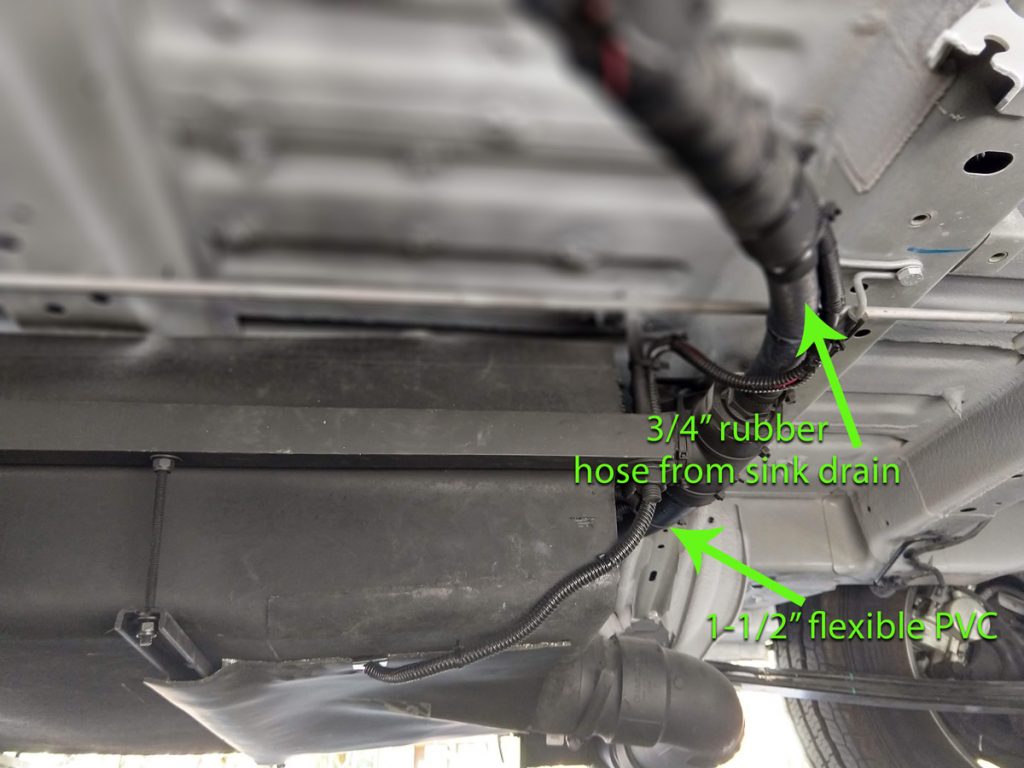
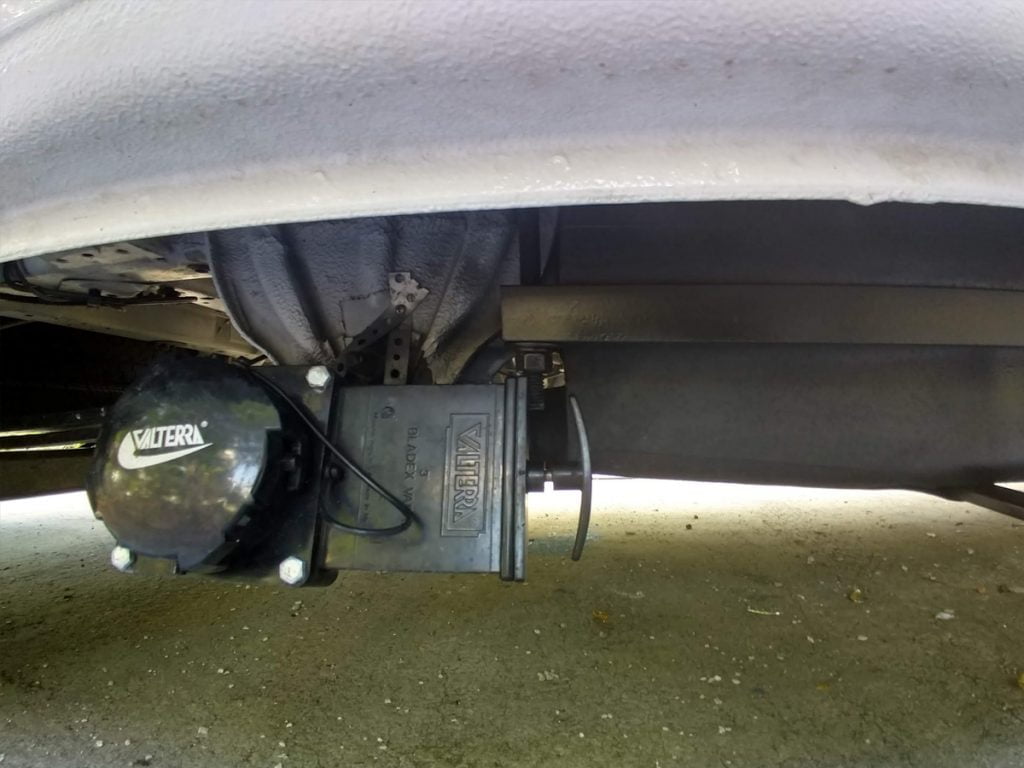
Download my detailed plumbing diagram (PDF).
Checkout all the parts I used on the build (outside of basic hardware store items).

